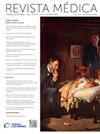健康危机期间健康科学教师的工作福利和职业条件(COVID-19
IF 0.4
Q4 MEDICINE, GENERAL & INTERNAL
引用次数: 0
摘要
背景对 COVID-19 大流行期间学生的幸福感及其与个人和学术因素的关系进行了广泛研究。目的评估智利 COVID-19 健康危机期间健康职业教师的职业条件与教师在工作中的幸福感之间的关系,包括教师的参与度和职业倦怠。方法定量研究,采用观察和横断面设计以及关系范围,以非概率抽样策略和方便抽样的方式,获得了 234 名健康科学教师的样本,他们在阅读并接受知情同意书后,回答了 UWES-17 工作投入量表、马斯拉奇职业倦怠量表 HSS 版、教学资源可用性量表、社会人口问卷和工作条件问卷。职业倦怠和敬业度几乎在所有因素上都显示出反向相关性(p < 0.05),但吸收力除外。此外,这两个变量还与教师的性别、年龄和能否获得安静的工作场所有关(p < 0.05)。在可用资源方面,安静的工作场所比获得技术更为重要。本文章由计算机程序翻译,如有差异,请以英文原文为准。
Bienestar laboral y condiciones ocupacionales en docentes de carreras de Ciencias de la Salud durante la crisis sanitaria por COVID-19
Background
Student well-being during the COVID-19 pandemic, and its relationship to personal and academic factors, has been extensively studied. However, there are few studies regarding this phenomenon in teachers.
Objective
To evaluate the relationship between occupational conditions and teachers’ wellbeing at work, in terms of their engagement and burnout, in health career teachers during the COVID-19 health crisis in Chile.
Methods
Quantitative study, with an observational and cross-sectional design and relational scope, with a non-probabilistic sampling strategy and by convenience, a sample of 234 health science teachers was obtained, who answered the UWES-17 Work Engagement Scale, the Maslach Burnout Inventory HSS version, a Scale of resources available for teaching and a sociodemographic questionnaire and working conditions, after reading and accepting an informed consent.
Results
Teachers reported high work engagement in its dimensions of vigor, absorption and dedication, moderate emotional exhaustion and less depersonalization and lack of personal fulfillment. Burnout and engagement showed inverse correlations with each other in almost all their factors (p < 0.05), except in the case of absorption. In addition, both variables showed a relationship with gender, age of the teachers and access to quiet places to work (p < 0.05).
Conclusions
The sociodemographic characteristics of teachers showed to be more associated with their reported well-being than their academic conditions. In terms of available resources, quiet spaces for work were more important than access to technology.
求助全文
通过发布文献求助,成功后即可免费获取论文全文。
去求助
来源期刊

Revista Medica Clinica Las Condes
MEDICINE, GENERAL & INTERNAL-
CiteScore
0.80
自引率
0.00%
发文量
65
审稿时长
81 days
 求助内容:
求助内容: 应助结果提醒方式:
应助结果提醒方式:


